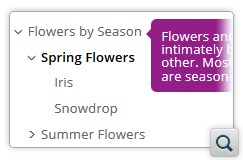2026
27.1Version 27.1 - March 24, 2025
2025
27.0Version 27.0 - November 27, 2024
- 26.1
Version 26.1 - March 25, 2024
2024
26.0Version 26.0 - October 11, 2023
- 25.1
Version 25.1 - March 16, 2023
2023
25.0Version 25.0 - October 13, 2022
- 24.1
Version 24.1 - March 7, 2022
2022
24.0Version 24.1 - March 7, 2022
Version 24.0 - October 18, 2021- 23.1
Version 23.1 - March 4, 2021
2021
23.0Version 23.1 - March 4, 2021
Version 23.0 - November 19, 2020- 22.1
Version 22.1 - May 19, 2020
- 22.0
Version 22.1 - May 19, 2020
Version 22.0 - February 12, 2020 2020
21.1Version 21.1 - May 23, 2019
- 21.0
Version 21.1 - May 23, 2019
Version 21.0 - February 22, 2019 2019
20.1Version 20.1 - June 15, 2018
- 20.0
Version 20.1 - June 15, 2018
Version 20.0 - March 16, 2018 2018
- 19.0
Version 19.1 - September 29, 2017
Version 19.0 - April 5, 2017 2017
- 18.0
Version 18.1 - October 18, 2016
Version 18.0 - April 21, 2016 2016
- 17.0
Version 17.1 - October 20, 2015
Version 17.0 - May 5, 2015 2015
- 16.0
Version 16.1 - October 7, 2014
Version 16.0 - May 20, 2014 2014
- 15.0
Version 15.2 - January 22, 2014
Version 15.1 - October 7, 2013
Version 15.0 - June 7, 2013
What's New in Oxygen XML Webhelp 19.1
September 29, 2017
Oxygen XML WebHelp version 19.1 is the latest release for the modern web publishing system. This release includes a variety of improvements to help make your WebHelp output even more responsive and intuitive for your audience. For this version, we focused much of our efforts on enhancing various components in the WebHelp Responsive system to make it easier for the end user to navigate through your documentation.
WebHelp Responsive
Side TOC Component Improvements
The side TOC component received a lot of improvements to make
it easier to navigate through the topics in your documentation. It now
includes expand/collapse buttons that you can use to see the child topics for a particular
topic. Also, when you hover over a topic, a short description is now displayed in a
tooltip. Furthermore, you can now control whether the side TOC will
only present topics from the active chapter or all topics from your entire
publication.
WebHelp Menu is Created Dynamically
The WebHelp menu was redesigned so that it is created
dynamically when the user hovers over a certain topic. This reduces the size of the
generated HTML files and increases the loading speed.
Automatic Permanent Links
Automatic permanent links are generated for topics that
contain inner sub-sections. These links are useful when you want to share an exact section
from your documentation with others.
Index Terms Page Redesigned
The index page was redesigned and improved. An alphabet that
contains the first letter of the documentation index terms is now generated at the top of
the index page. Each letter represents a link to a specific indices section. More over,
the indexes are presented in multiple columns to make it easier to read this page.
Next/Previous Navigation Buttons
Next and Previous navigational
buttons are generated depending on the
collection-type="sequence" attribute that is set on the topic
references in your DITA map. If you don't want to set this attribute on all
topicref elements, you can instead use the
webhelp.default.collection.type.sequence parameter to set the default
value for the collection-type attribute to
sequence.

